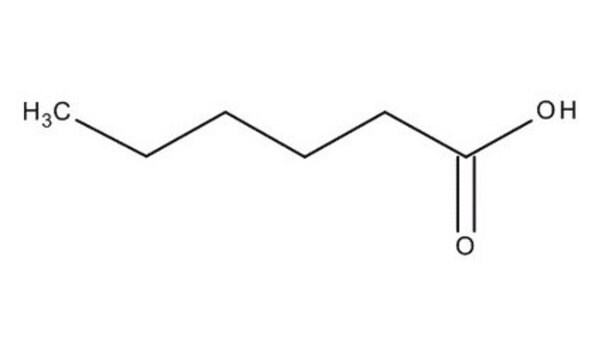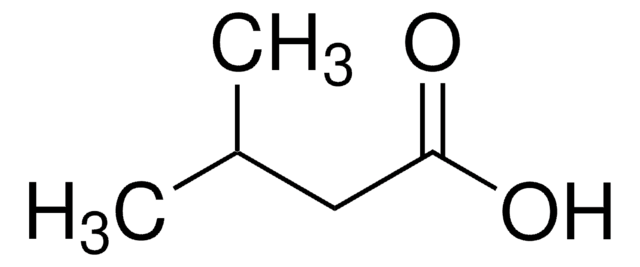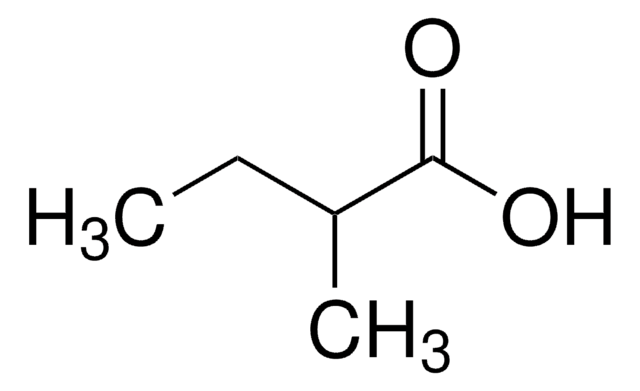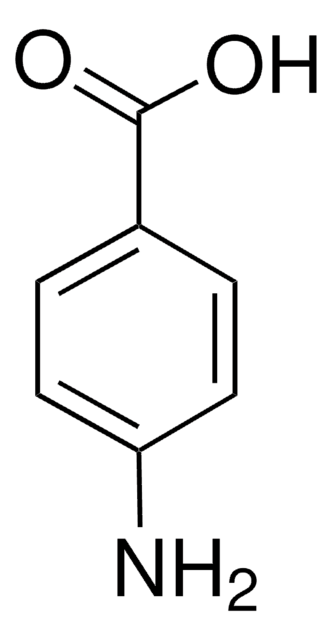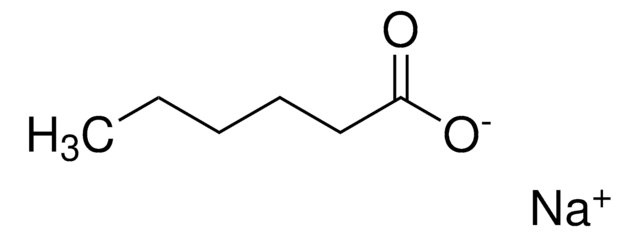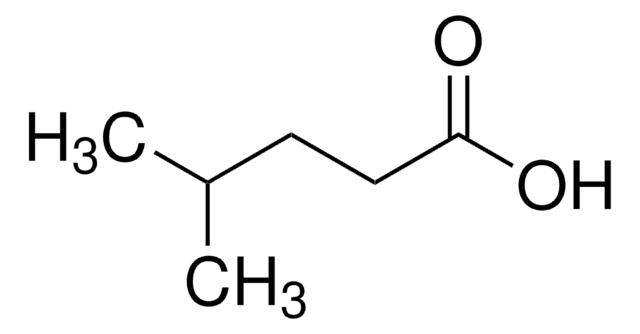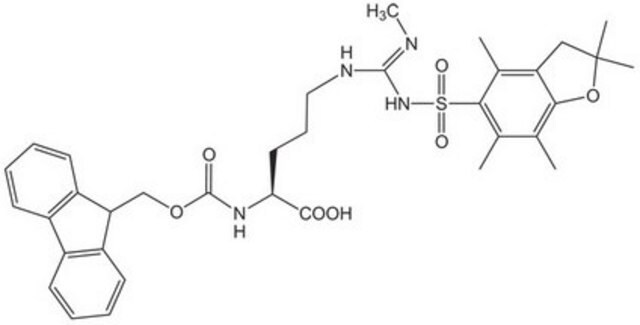Kluczowe dokumenty
153745
Hexanoic acid
≥99%
Synonim(y):
Acid C6, Caproic acid
About This Item
Polecane produkty
gęstość pary
4 (vs air)
Poziom jakości
ciśnienie pary
0.18 mmHg ( 20 °C)
Próba
≥99%
Formularz
liquid
współczynnik refrakcji
n20/D 1.4161 (lit.)
bp
202-203 °C (lit.)
mp
−4 °C (lit.)
rozpuszczalność
H2O: slightly soluble
diethyl ether: easily soluble
ethanol: easily soluble
gęstość
0.927 g/mL at 25 °C (lit.)
grupa funkcyjna
carboxylic acid
Organoleptyczne
pungent
ciąg SMILES
CCCCCC(O)=O
InChI
1S/C6H12O2/c1-2-3-4-5-6(7)8/h2-5H2,1H3,(H,7,8)
Klucz InChI
FUZZWVXGSFPDMH-UHFFFAOYSA-N
Szukasz podobnych produktów? Odwiedź Przewodnik dotyczący porównywania produktów
Powiązane kategorie
Opis ogólny
Zastosowanie
- To prepare polyethylene glycol derived nanomicelles as a non-viral gene carrier.
- As a starting material to synthesize an amino acid L-norleucine.
- As a reactant to prepare 4-methoxy phenyl hexyl ketone through Friedel−Crafts acylation of anisole using Hβ zeolite-based catalyst.
- As a template in the preparation of highly conducting thin polypyrrole coated alumina composite particles.
Hasło ostrzegawcze
Danger
Zwroty wskazujące rodzaj zagrożenia
Zwroty wskazujące środki ostrożności
Klasyfikacja zagrożeń
Eye Dam. 1 - Skin Corr. 1C
Kod klasy składowania
8A - Combustible corrosive hazardous materials
Klasa zagrożenia wodnego (WGK)
WGK 1
Temperatura zapłonu (°F)
215.6 °F - closed cup
Temperatura zapłonu (°C)
102 °C - closed cup
Środki ochrony indywidualnej
Faceshields, Gloves, Goggles, type ABEK (EN14387) respirator filter
Wybierz jedną z najnowszych wersji:
Masz już ten produkt?
Dokumenty związane z niedawno zakupionymi produktami zostały zamieszczone w Bibliotece dokumentów.
Klienci oglądali również te produkty
Protokoły
In this study, SPME was used for the analysis of free fatty acids in Parmesan cheese using a 65 μm Carbowax/divinylbenzene (DVB) SPME fiber. Headspace extraction of the cheese sample was conducted at 65 °C for 15 minutes and analyzed by GC with FID detection. SPME is ideal for analyzing the volatiles associated with solid food samples. The phase chemistry of the Nukol GC column provides excellent peak shape of acidic compounds.
Global Trade Item Number
| SKU | GTIN |
|---|---|
| 153745-100G | 4061838741097 |
| 153745-100ML | |
| 153745-500ML | |
| 153745-2.5G | 4061836698812 |
| 153745-2.5ML | |
| 153745-500G | 4061836698829 |
Nasz zespół naukowców ma doświadczenie we wszystkich obszarach badań, w tym w naukach przyrodniczych, materiałoznawstwie, syntezie chemicznej, chromatografii, analityce i wielu innych dziedzinach.
Skontaktuj się z zespołem ds. pomocy technicznej
